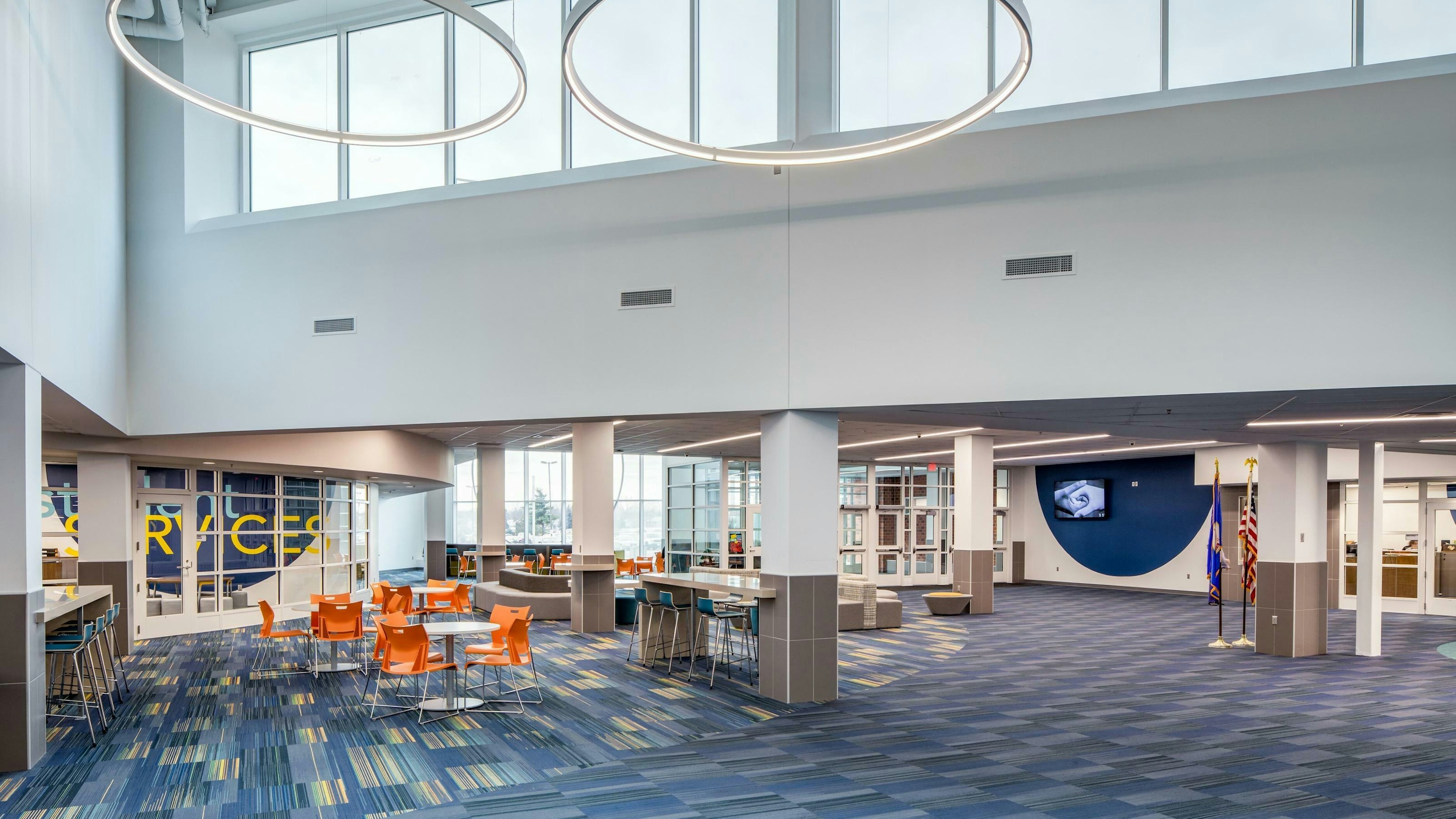
As the leader of Wold Architects and Engineers’ education division, Vaughn Dierks, AIA, LEED AP, is a partner with nearly 30 years of design experience and expertise. Since joining Wold in 1994, he has helped lead countless projects and currently serves as a corporate resource for all education design teams. He earned his Bachelor of Arts in Architecture at Washington University in St. Louis, Missouri, and his Master in Architecture at the University of Minnesota.
Invest: Minneapolis - St. Paul recently interviewed Vaughn about the firm’s mission to serve the communities in which it works, its efforts to advance community improvements through infrastructure, and the future of engineering.
Read the Q&A below:
Invest: Minneapolis: How did the company’s goals play out in 2021?
Vaughn Dierks: The best way to think about that is to look at our company’s mission statement, which is to make a difference in the communities we serve. The different areas we work in are primarily in the public sector, such as education, government, healthcare and senior living. The pandemic impacted those sectors the most, so our goals for 2021 were about finding ways to help. It was a time for us to rethink how we assist clients through these challenges, and we doubled down on a lot of our internal initiatives. From a company standpoint, it was about looking for ways to bring different groups together that were working on similar projects.
IM: How have your company operations changed?
VD: Like many companies, there is no returning to the prior normal. Too often, we find that it is easy to do what is comfortable. If 1.0 is what was comfortable, 2.0 was the pandemic and 3.0 is going to be how we continue and evolve with technology and different methods of working. Growth still comes down to people, so finding like-minded individuals and working toward our mission is important to our continued growth.
IM: What is the current state of demand for your services?
VD: Traditional brick and mortar industries, specifically retail, have been hit pretty hard, and I think office space is still an uncertainty for many companies. Personally, we don’t see a decrease in demand for office spaces, but the type of space is changing, such as having coworking spaces. Having the infrastructure to handle more internet capabilities has also become much more important.
In the education segment, a big part of the discussion that has persisted, even before the pandemic, has been around the outdated 1950’s educational layout, or the hallway-and-classroom-based model. People now understand there is a need to provide students with the ability to explore their interests by having other spaces to increase learning and engagement in different ways.
With healthcare, the common word that our healthcare group uses is dignity and how to provide patients with dignity no matter what the system is. It’s about looking at the recovery and rehabilitation process with different spaces, and, as with education, no longer having only long hallways and rooms.
IM: What is shaping the future of engineering?
VD: From an engineering perspective, most of the things we talk about are part of the American Institute of Architects’ 2030 Challenge to commit to net zero emissions. Many of our clients are looking for on-site renewable energy sources. Following Covid-19, we’re also having more conversations about indoor air quality and mitigation of future pandemics.
We really believe our job is to make a difference in our communities. When it comes to sustainability, it requires a commitment from everyone involved to make the appropriate changes. It should be part of every conversation to make sure people understand the ways you can approach sustainability.
IM: How significant will the infrastructure bill be for your area?
VD: In our office, we tend to look at things a little bit more objectively because we are routinely going into buildings and doing facility analysis reports to document the physical conditions and what needs to be fixed to extend their life into the future. Anything physical has a life cycle to it and, unfortunately, a lot of our infrastructure is at the end of its life cycle or has outlived the tech it was based on. In terms of the infrastructure bill, it will give people the confidence to move forward with the necessary projects to make updates.
We know that housing demands are critical, and what we are seeing is denser housing going up, with more community amenities. That denser environment actually helps with sustainability.
IM: What challenges have you been facing?
VD: Supply chain and inflation has been tough, and some construction items can experience a 50% or more increase from their projected budget. The public bid process for contractors does not bring entities to the table while the project is being designed early enough. Some revisiting of that process is needed to have more upfront consideration.
In terms of the labor shortage, a career in technical education has been part of every high-school conversation we have. We used to have trades as part of the education program until they became state entities. We are shifting to doing those things hands-on and having people going into schools via apprenticeship programs to expose students to other viable options they could be interested in.
IM: What makes the region unique?
VD: Minnesota is considered a well-kept secret. As someone who grew up here, I know it personally. The different sectors that we are in are some of the best in the country, such as our education and healthcare systems. Our government and senior living are doing great as well. On top of all that, we have an abundance of natural beauty and nature, providing a quality of life that you can’t get in many other locations.
Read the full 2022 publication on Capital Analytics: Invest: Minneapolis – St. Paul's website.